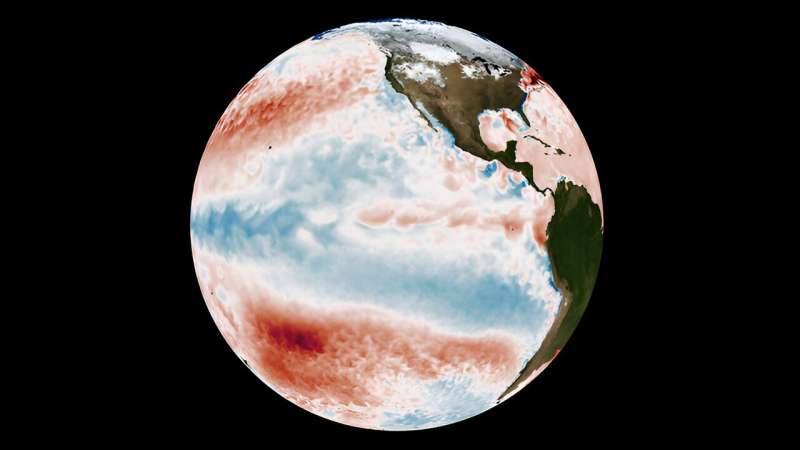This article has been reviewed according to Science X's editorial process and policies. Editors have highlighted the following attributes while ensuring the content's credibility:
fact-checked
peer-reviewed publication
trusted source
proofread
Study finds natural climate variability impacts Arctic and global warming

When comparing model simulations of Earth's recent warming to real-world observations, differences can arise from several factors, including model errors in the simulated response to increased greenhouse gases and natural fluctuations within the climate system.
Natural climate variability, also called internal variability, can change regional and global atmospheric temperature by moving heat within the climate system. Diagnosing the role of natural climate variability over recent decades is critically important for both model validation and projections of future warming.
In an effort to quantify the role of natural fluctuations in model-observation differences, Lawrence Livermore National Laboratory scientist Stephen Po-Chedley and collaborators found the unique temperature trend patterns associated with natural climate variability for 1980–2022. The research appears in Geophysical Research Letters.
"The relative role of different drivers of model-observational discrepancies in the pattern of warming has important implications for our understanding of climate sensitivity, as well as regional climate changes," said Po-Chedley, a co-author of the research. "This work shows that natural variations in Earth's climate likely contribute to key differences in the simulated-versus-observed pattern of surface-air temperature changes."
Previous studies by this research team have shown that natural climate variability has decreased global warming and enhanced Arctic warming. The team analyzed the multi-decadal trend patterns from hundreds of CMIP6 (the sixth phase of the Coupled Model Intercomparison Project, a global collaboration of climate modelers) simulations in which natural variability warms the Arctic but has a global cooling effect. They found that the majority of these model simulations also produce enhanced warming in the Barents Sea (near Norway) and Kara Sea (just north of Siberia) and cooling in the tropical eastern Pacific and Southern Ocean due to natural variability.
"Since these are the exact features imprinted on observed surface-temperature changes over 1980–2022, our work suggests that natural variability is an important component of several noteworthy differences between models and observations," said Aodhan Sweeney, a graduate student and lead author of the study from the University of Washington (UW).
"The cause of observed cooling over the tropical eastern Pacific and Southern Ocean in the last few decades is a hotly debated topic in climate science. This study provides compelling evidence that the natural variability could be largely responsible for the observed cooling over these regions," said Qiang Fu, a professor and co-author of the publication from UW.
The team found that a rare configuration (<3%) of natural climate variability contributes to enhanced Arctic warming and simultaneous cooling of the tropical eastern Pacific and Southern Ocean, which mimic the exact features that are imprinted on the observational record. While this pattern of temperature change is not seen in the average simulation over the CMIP6 models, each of the climate models examined in the study does infrequently (0.4–2.8% of the time) produce a pattern similar to observations.
"By attributing model deviations in the pattern of surface warming to natural climate variability, our study reinvigorates confidence in climate models' ability to produce realistic projections of future climatic change," said Hailong Wang, a co-author and research scientist at Pacific Northwest National Laboratory (PNNL).
The team concluded that although more research is needed to fully attribute the causes of modeled-versus-observed differences in the pattern of global surface air temperature change, the identified pattern of internal variability and its similarity to features imprinted on the observational record suggests that natural climate variability did indeed reduce global warming and enhance Arctic warming over 1980–2022.
More information: Aodhan J. Sweeney et al, Unique Temperature Trend Pattern Associated With Internally Driven Global Cooling and Arctic Warming During 1980–2022, Geophysical Research Letters (2024). DOI: 10.1029/2024GL108798
Journal information: Geophysical Research Letters
Provided by Lawrence Livermore National Laboratory





















